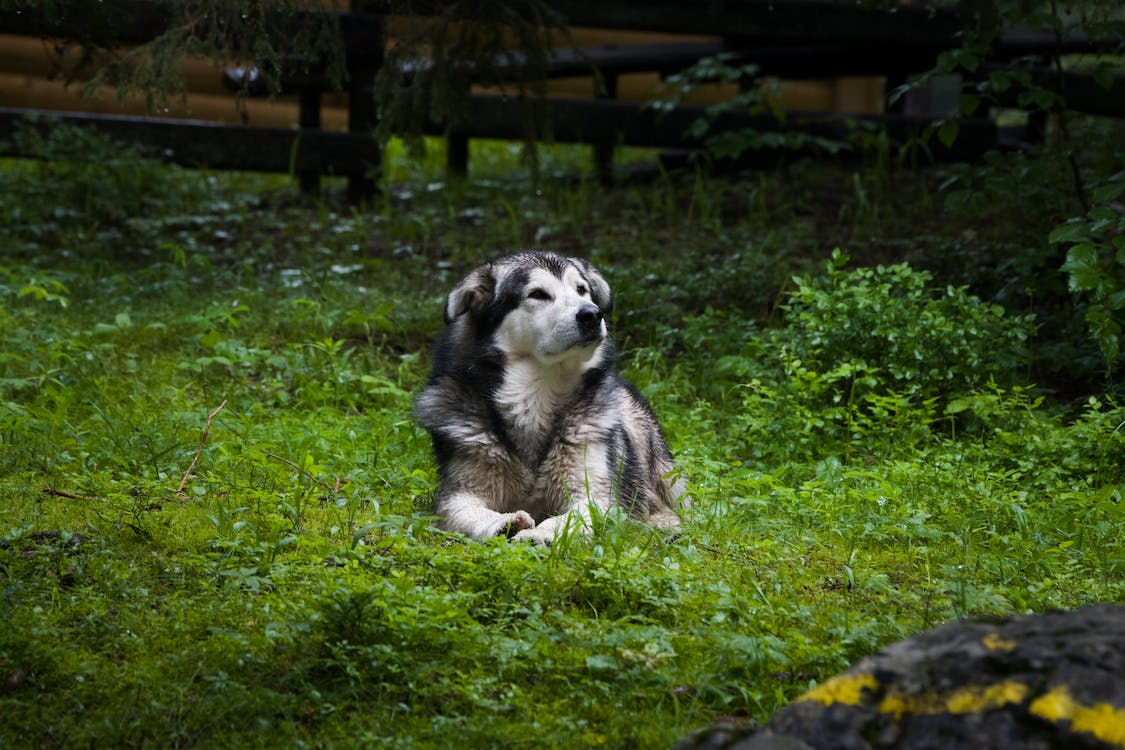
Are you a proud dog owner looking to find the perfect collar for your furry friend? Look no further! In this article, we will guide you through the world of dog collars and help you find the ideal fit for your beloved companion. Collars are not just a fashion statement for dogs; they serve an essential purpose in keeping them safe and secure.
With so many options available in the market, finding the right collar might seem overwhelming. But fear not, as we break down the key factors to consider when choosing a collar, including size, material, and style. We will also share some expert tips on how to measure your dog’s neck and ensure a comfortable fit. So, whether you have a small breed or a large one, a playful pup or a well-trained companion, we’ve got you covered. Get ready to embark on a collar shopping adventure that will leave your furry friend looking stylish and feeling secure!
The Importance of Finding the Right Collar for Your Dog
Finding the right collar for your dog is not just about looks; it is essential for their safety and well-being. A well-fitted collar will ensure that your dog remains secure and prevents them from slipping out and getting lost. It also provides a convenient attachment point for a leash, making walks and outings more enjoyable for both of you.
When choosing a collar, it is crucial to consider your dog’s specific needs and lifestyle. For example, if you have a small breed, a lightweight and comfortable collar would be appropriate. On the other hand, if you have a large, strong dog, you’ll need a collar that can withstand their strength.
Types of Dog Collars Available
There are various types of dog collars available in the market, each designed for different purposes. Let’s take a closer look at some popular options:
Flat Collars
Flat collars are the most common type and are suitable for everyday use. They are made of nylon or leather and come in a variety of colours and designs. These collars are adjustable and have a buckle or snap closure for easy on and off.
Martingale Collars
Martingale collars are designed for dogs that tend to slip out of their collars. They feature a limited-slip design that tightens slightly when the dog pulls, preventing them from escaping. These collars are often used for training and are especially useful for dogs with narrow heads, like Greyhounds or Whippets.
Harnesses
Harnesses are an excellent alternative to traditional collars, especially for dogs with respiratory issues or those prone to pulling on the leash. They distribute the pressure evenly across the dog’s chest and back, reducing strain on their neck. Harnesses come in various styles, including step-in, vest, and front-clip, each offering different levels of control and comfort.
Choosing the Right Size for Your Dog
Choosing the right size collar for your dog is crucial for their comfort and safety. An ill-fitting collar can cause discomfort, chafing, or even injury. Here’s how to determine the correct size for your furry friend:
Measure Your Dog’s Neck
Use a flexible tape measure or a piece of string to measure the circumference of your dog’s neck. Make sure to measure at the widest part, usually just above the shoulders. Record the measurement in inches or centimetres.
Check the Sizing Chart
Refer to the sizing chart provided by the collar manufacturer. Each brand may have slightly different sizing guidelines, so make sure to double-check before making a purchase.
Leave Room for Comfort
When in doubt, it’s better to go for a slightly larger size rather than a smaller one. You should be able to fit two fingers comfortably between the collar and your dog’s neck. This ensures a snug yet comfortable fit.
Do remember that dogs come in various shapes and sizes, so it is essential to measure your dog’s neck accurately and refer to the sizing chart to find the perfect fit.
Different Materials Used in Dog Collars
Dog collars are made from a variety of materials, each offering its unique benefits and drawbacks. Here are some commonly used materials:
Nylon
Nylon collars are lightweight, durable, and come in a wide range of colours and patterns. They are easy to clean and maintain, making them a popular choice for everyday use. However, they may not be suitable for dogs with sensitive skin, as they can cause irritation or allergic reactions.
Leather
Leather collars are well-known for their durability and classic look. They are comfortable, long-lasting, and develop a beautiful patina over time. Leather collars require regular conditioning to keep them supple and prevent cracking. They are an excellent choice for dogs with sensitive skin, as they are less likely to cause irritation.
Chain or Metal
Chain or metal collars are primarily used for training purposes. They provide more control and are often used for dogs that tend to pull or exhibit aggressive behaviour. However, they should be used with caution and under the guidance of a professional dog trainer as they can cause injury if used improperly.
When choosing the material for your dog’s collar, consider their comfort, durability, and any specific needs they may have.
Features to Consider When Selecting a Collar
When shopping for a collar, it’s essential to consider the features that will best suit your dog’s needs. Here are some key features to look out for:
Quick-release Buckle
A quick-release buckle allows for easy on and off, ensuring that you can quickly remove the collar in case of an emergency. This feature is especially important if your dog spends a lot of time outdoors or participates in activities where the collar may get caught.
Reflective or LED
Collars with reflective or LED features are excellent for night time visibility. They help drivers and pedestrians see your dog in low-light conditions, reducing the risk of accidents.
ID Tag Attachment
Look for a collar with a built-in ring or attachment point for ID tags. This ensures that your dog’s identification information is always easily accessible in case they get lost.
How to Measure Your Dog’s Neck for a Collar
Properly measuring your dog’s neck is crucial to finding the right collar size. Here’s a step-by-step guide on how to measure your dog’s neck:
Use a flexible tape measure or a piece of string
Wrap the tape measure or string around your dog’s neck, just above the shoulders, where the collar will sit. Ensure that it is snug but not too tight.
Record the measurement
Once you have the measurement, note it down in inches or centimetres. This measurement will help you determine the correct size when referring to the collar’s sizing chart.
Double-check the measurement
To ensure accuracy, measure your dog’s neck in two different positions: when they’re standing and when they’re sitting. This will help account for any variations in neck size due to posture.
Adjusting and Fitting the Collar Properly
Once you have purchased the right collar for your dog, it’s important to adjust and fit it properly. Here’s how to do it:
Adjust the collar length
Most collars come with an adjustable strap that allows you to customize the fit. Start by adjusting the collar to its largest size, then place it around your dog’s neck. Slide the collar until it fits snugly, with enough room for two fingers between the collar and your dog’s neck.
Trim excess length
If the collar strap is too long, trim the excess length, leaving enough room for future adjustments as your dog grows or gains/loses weight.
Check for proper fit
Once you’ve adjusted the collar, check for a proper fit by running your fingers between the collar and your dog’s neck. You should be able to fit two fingers comfortably. This ensures that the collar is snug enough to prevent slipping but not too tight to cause discomfort.
Remember to periodically check the collar’s fit as your dog grows or changes weight. A properly fitted collar will ensure their safety and comfort.
Safety Considerations for Dog Collars
While dog collars serve an important purpose, it’s essential to prioritize your dog’s safety. Here are some safety considerations to keep in mind:
Regularly check the collar
Inspect the collar regularly for any signs of wear and tear. Look for frayed edges, loose stitching, or damaged buckles. Replace the collar if it shows any signs of damage.
Remove the collar when unsupervised
If your dog spends a lot of time unsupervised or in a crate, it is a good idea to remove their collar. Doing so reduces the risk of it catching on objects or causing injury.
Use a breakaway collar for cats
If you have a cat, consider using a breakaway collar. These collars will release if they become caught or entangled, preventing accidents.
Cleaning and Maintenance Tips for Dog Collars
To keep your dog’s collar in top condition, it’s important to clean and maintain it regularly. Here are some tips to help you:
Follow the manufacturer’s instructions
Different materials require different cleaning methods, so it’s best to follow the manufacturer’s instructions. Cleaning by hand with mild soap or water will be sufficient for most collars. Avoid using harsh chemicals or abrasive cleaners, as they can damage the collar.
Remove odours
If your dog’s collar develops a strong odour, soak it in a mixture of water and vinegar for a few hours. This will help neutralize the smell. Rinse thoroughly and allow it to air dry.
Condition leather collars
If you have a leather collar, regularly condition it with a leather conditioner or oil. This will keep it soft, supple, and prevent cracking.
By incorporating these cleaning and maintenance tips into your routine, you can prolong the life of your dog’s collar and keep it looking and smelling fresh.
Conclusion
Finding the perfect collar for your furry friend doesn’t have to be a daunting task. By considering factors such as size, material, and style, you can choose a collar that meets your dog’s specific needs and enhances their comfort and safety. Remember to measure your dog’s neck accurately, adjust and fit the collar properly, and prioritize their safety at all times. With the right collar, your dog can look stylish and feel secure, making every walk and adventure together a joyful experience. So, go ahead and embark on your collar shopping adventure with confidence, knowing that you are equipped with the knowledge to find the perfect fit for your furry friend.

































